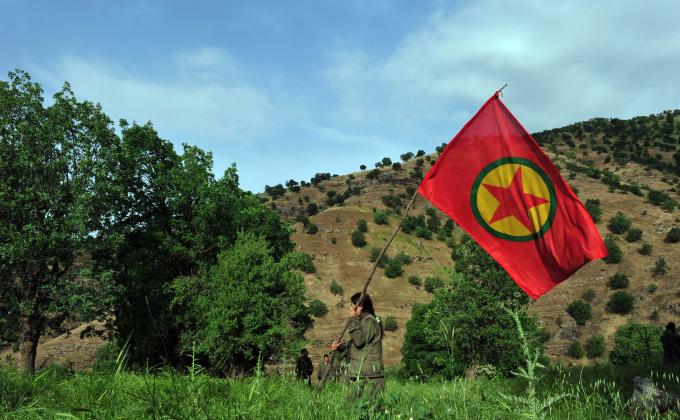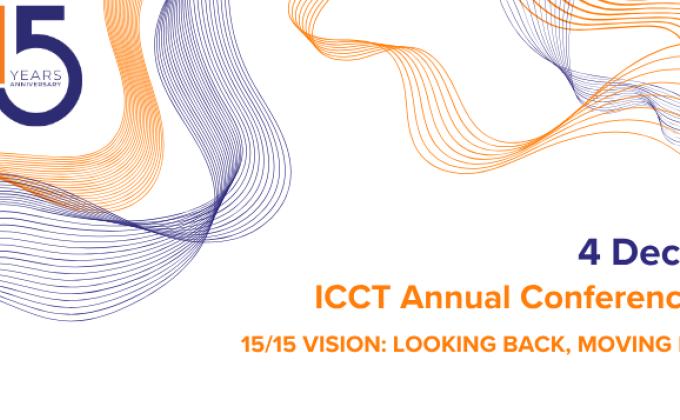As of 2025, the Islamic State no longer controls significant territory in the Middle East, but its threat persists globally. Through a hybrid organisational model that balances regional autonomy with centralised oversight, the Islamic State remains lethal, resilient, and adaptive. This short read examines its structural evolution, geographic expansion, digital operations, the implications of waning international counterterrorism efforts amid great power competition, and why this dynamic has created a strategic paradox.
The current state
Twenty-one years after its founding in 2004 and eleven years since declaring a caliphate in 2014, the Islamic State’s territorial presence in Iraq and Syria has diminished significantly. At its height, the organisation fielded up to 80,000 militants, including more than 42,000 foreign terrorist fighters from over 120 countries. In contrast, by mid-2025, estimates suggest only 1,500 to 3,000 fighters remain active in Syria and Iraq.
Despite the Islamic State having shrunk in the Middle East, its global presence has expanded significantly, and by the end of 2024, the Islamic State remained the deadliest terrorist organisation in the world. Since the loss of its self-proclaimed Caliphate in Syria and Iraq in 2019, and some 60,000 combatants, the organisation has undergone radical structural and operational changes. In 2025, the Islamic State relies primarily on a dynamic network of regional affiliates who operate with a greater autonomy of action than ever before, with Afghanistan-based IS-Khorasan being the most prominent branch linked to numerous high-profile attacks in Afghanistan, Iran, Russia, Turkey, etc.
While there is an ongoing debate among experts who claim that the Islamic State has been degraded into a decentralised network of affiliated branches and others who claim that it has instead evolved into an even more cohesive globally integrated organisation, one could reasonably argue that the Islamic State has adopted a hybrid model that features elements of both.
Forced to abandon its ambitions of a territory-based caliphate, it gradually shifted to a less hierarchical structure and a more decentralised operational model with the intent of enhancing the chances of its survival and the resilience of its regional structures. Even the fact that as of mid-2025 there is no clear understanding of the real identity of Abu Hafs al-Hashimi al-Qurashi, the fifth and current caliph of the Islamic State, is likely a reflection of this shift toward a hybrid structure that prioritises flexibility and security over centralised control, given that a named leader is arguably less critical for operational continuity in a non-centralised structure.
At the same time, while adopting a regionalised model that fosters agility and flexibility through a less hierarchical structure, the Islamic State core retains connectivity and oversight over its network of global affiliates through its restructured General Directorate of Provinces, that acts as the central hub for provision of operational support, funding and ideological guidance. In sum, the current hybrid model balances regional autonomy with centralised oversight, allowing the Islamic State to remain adaptable while pursuing its global jihadist agenda.
Much like in the case of the current caliph, the identity of the overarching leader of the General Directorate of Provinces remains unknown. Nevertheless, as of the time of writing, UN sources have named Abdallah Makki Mosleh al-Rafi’i (alias Abu Khadija al-Iraqi), an Iraqi national born in 1991 and one of the main known leaders of the Islamic State, as the possible Head of the Directorate and the Delegated Committee. His listing as a Specially Designated Global Terrorist was announced by the US State Department on 8 June 2023.
Despite the uncertainties surrounding the current leadership and the debate on its organisational model, the Islamic State’s adaptability is evident in its sustained ability to radicalise and recruit new militants to its cause and to direct or inspire deadly attacks from Kerman, Iran, in January 2024 to Moscow, Russia, in March 2024 and from Solingen, Germany, in August 2024 to New Orleans, US, in January 2025. These incidents testify not only to the continued appeal of its brand of violent ideology but also to the organisation’s resilience and global reach.
The hotspots
Middle East: Syria and Iraq
Syria, together with the Democratic Republic of Congo, experienced the highest numbers of fatalities in 2024 resulting from Islamic State activities globally. The number of attacks in Syria in 2024 surged significantly to almost 700 compared to 2023, when the number was almost three times smaller. This resurgence was arguably as much due to the weakening control of the beleaguered central government in the fractured Arab state as it was the result of a push by the Islamic State to reconstitute its capabilities in Syria after a period of decreased activity.
The fall of Bashar al-Assad’s regime in December 2024, following the Syrian Army’s collapse, has fuelled sectarian violence in early 2025, raising fears that the resulting governance vacuum and worsening security situation could enable the Islamic State to regroup and expand in Syria. However, these concerns have not fully materialised in 2025, as attack numbers have in fact decreased compared to 2024, with most incidents occurring in Syrian Democratic Forces (SDF)-controlled areas in northeastern Syria. This indicates the Islamic State is adapting by targeting regions with weaker control while reorganising and rebuilding its networks. Notably, an increase in attacks was observed in April-May 2025, coinciding with the US military’s troop reduction from 2,000 to approximately 700.
Detention facilities and camps in northeastern Syria pose another persistent security challenge. Approximately 8,500 suspected Islamic State-affiliated militants are held in over twenty SDF-run facilities, with 64 percent Syrians, 19 percent Iraqis, and 17 percent foreign nationals from over 50 countries. Additionally, around 38,400 individuals – mostly wives, widows, children, or relatives of suspected militants – are detained in al-Hol and Roj camps. Of these, 42 percent are Syrians, 36 percent Iraqis, and 22 percent nationals of over 50 other countries. This contingent remains a key focus of Islamic State propaganda and operations, including repeated attacks on SDF-run prisons to free militants.
The 8,500 detained militants, many with combat experience, pose an immediate security threat due to their potential to regroup if liberated. The Islamic State has exploited regional instability to launch such attacks, notably the January 2022 assault on al-Sina’a Prison in Hasakah, which killed over 500 and freed scores of fighters. Ongoing attacks in SDF-controlled areas may be a strategic push to strain SDF resources and facilitate further breakouts. Meanwhile, the camps, where 60 percent of residents are children – many of them orphans or separated from families, living in fear amid violence and extremist influences – present a grave humanitarian and long-term security challenge. These children, raised in squalid conditions with limited access to water, food, healthcare, or education, are highly vulnerable to trauma and radicalisation, amplifying the risk of future extremism.
Africa: Sahel, West, and East Africa
As of mid-2025 the Islamic State appears to be growing the fastest in Africa, particularly in the Sahel, driven not only by chronic issues such as political instability and local grievances, economic hardship, and weak governance. It is also fuelled by the withdrawal of Western military forces until recently engaged in long-standing defence agreements and expansive counter-terrorism efforts in the region. As a result, the Islamic State Sahel Province (ISSP) that operates primarily across Mali, Burkina Faso, and Niger has significantly expanded its territorial control in some rural areas in the Liptako-Gourma tri-border region. The latest available estimates assess the strength of ISSP at between 2,000 and 3,000 fighters. By comparison, the strength of this affiliate was estimated at 425 combatants in late 2018. These estimates suggest an exponential growth of between 4 to 6 times in the past seven years.
Another fast-growing affiliate that has doubled in size over the past year and is steadily becoming a key logistical and financial hub for the Islamic State globally is IS-S, operating in Somalia. The group has an estimated force of about 1,000 fighters, including foreign fighters mainly from neighbouring African countries.
The Islamic State-West Africa Province (ISWAP) remains one of the dominant and most active terrorist affiliates with an estimated force of 2,000-3,000 fighters operating in the Lake Chad Basin. Another Islamic State affiliate with less significant activities on the continent is ISCAP, operating primarily in the Democratic Republic of Congo and in Mozambique. The Islamic State’s presence in Libya and the Sinai region in Egypt is significantly smaller both in terms of fighter numbers and operational impact.
South and Central Asia: Afghanistan and Beyond
Finally, the organisation’s main affiliate in South Asia, IS-Khorasan (ISK), with an estimated force of between 4,000 to 6,000 fighters and family members, has gradually emerged as one of the most aggressive and active jihadist groups globally. It has expanded the perimeter of operations beyond Afghanistan, drawing militants from Central Asian countries like Tajikistan and Uzbekistan and has demonstrated a significant capacity for transnational terrorist activities and carrying out high-profile attacks. It is due to the frequency, complexity, and lethality of IS-Khorasan’s plots and attacks, including in Europe, that in early 2025 the United Nations Security Council’s Committee Analytical Support and Sanctions Monitoring Team assessed it to be the Islamic State’s affiliate that poses the greatest extra-regional terrorist threat.
The digital front
The Islamic State’s digital operations in 2025 remain a key pillar of its strategy to maintain global influence, project power, and advance its ideological and operational goals. The organisation effectively exploits social media platforms and encrypted messaging tools to disseminate propaganda, radicalise, and recruit supporters, particularly targeting younger demographics who are both most active online and vulnerable to radicalisation. A notable increase in minors involved in Islamic State-inspired plots in Europe underscores this trend, with cases like a 14-year-old girl in Austria detained for planning an attack with an axe and knife in Graz, another 14-year-old arrested in early 2025 for targeting a train station in Vienna, and a foiled 2024 plot against Taylor Swift concerts also in Vienna involving teens aged 17 to 19.
The young age of these individuals, who are very active online but unknown to counter-terrorism authorities, highlights the alarmingly short timeframe for their radicalisation and mobilisation to violence. These cases, among dozens recorded in recent years, reveal three key trends in Europe: radicalisation to the Islamic State’s brand of violent extremism is now primarily occurring online, happening at an accelerated pace, and increasingly involves younger perpetrators, often undetected by counter-terrorism authorities due to their lack of prior records.
An additional trend that aligns with the Islamic State’s shift to a decentralised model of operations is the pervasive use of encrypted messaging platforms by its militants and supporters. The organisation even disseminates online tutorials to guide supporters in evading surveillance and maintaining operational security by using these tools. Counter-terrorism agencies struggle to monitor these activities due to robust encryption barriers and insufficient legal frameworks for online monitoring and early threat detection. For instance, after the thwarted attack on Taylor Swift's Vienna concert, Austrian intelligence services called, in a common statement, for an adequate expansion of powers under strict legal oversight to address current and future threats.
Lastly, another aspect of the Islamic State’s digital strategy is the use of digital financial tools, including cryptocurrencies and anonymous online platforms, to raise and transfer funds for propaganda, logistics, and affiliate operations, evading traditional financial oversight and further enabling its global activities.
Outlook amid Western retrenchment and pivot toward great power competition
In the short to mid-term, the Islamic State is expected to remain a persistent transnational threat driven by its adaptive strategies, enduring ideological appeal, and ability to inspire global attacks. On the ground, its decentralised operational model and exploitation of regional instabilities will sustain its presence and potential expansion, especially in regions with weak governance. Tactically, it will likely continue to balance asymmetric warfare to maintain sustained pressure with high-impact attacks for maximum disruption and visibility. Online, its adept use of emerging technologies, encrypted messaging platforms, and cryptocurrencies will likely continue to bolster its operational resilience, enabling continued fundraising, radicalisation, recruitment, and operational coordination.
Countering this complex transnational challenge effectively will require sustained international cooperation. This includes enhancing intelligence sharing, disrupting the Islamic State’s exploitation of digital communication platforms and financial tools, and strengthening counter-terrorism support in regions experiencing heightened Islamic State activities. Alongside these traditional counter-terrorism efforts, non-coercive approaches are essential to address the underlying factors of radicalisation and grievances that the Islamic State exploits.
In Syria, the ongoing transition marked by sectarian violence and a reduced US military presence in the northeast risks creating a security vacuum that the Islamic State could exploit. Under these circumstances, the swift, coordinated international effort to dismantle SDF-run detention centres and the al-Hol and Roj camps becomes a critical priority. Repatriating, rehabilitating, and prosecuting these individuals in their countries of origin, in accordance with applicable laws, would mitigate the risks of prison breaks and the reintegration of freed detainees into the Islamic State ranks, addressing multifaceted and long-neglected security concerns tied to these facilities.
Yet, instead of sustained engagement and improved cooperation, 2025 has seen ongoing challenges in maintaining cohesive international efforts in the long-term fight against the Islamic State. A mix of forced and voluntary western withdrawals, regional mistrust and weakened coordination, reduced funding, and scaled-back efforts—including in development aid—are creating significant security gaps that the Islamic State and its affiliates are poised to exploit. For example, France’s withdrawal from its last base in Chad marked the end of a decade-long Sahel mission, alongside reduced EU and Canadian involvement, which has emboldened jihadist groups, leading to a surge in terrorism-related deaths. Burkina Faso, Mali, and Niger military juntas have since pivoted to Russia for support, as Moscow’s strategic long game—exploiting anti-Western sentiment, backing coups, and securing resource deals—has drastically reshaped Sahel alliances.
Meanwhile, the US has pivoted away from counter-terrorism as its primary focus toward great power competition with China and Russia, while at the same time shifting its focus inward to reevaluate its global role. This strategic reorientation, driven by evolving threat perceptions and domestic pressures after two decades of costly counter-terrorism operations, has led to reduced counter-terrorism and violence prevention budgets and uncertainty about the future of anti-terror initiatives, particularly in Africa.
In sum, the withdrawal from counter-terrorism operations in the Sahel, reduced military presence in key hotspots, and decreased funding are likely to weaken transnational counter-terrorism efforts. These changes occur amid rising terrorist activity and global security uncertainties, potentially allowing terrorist groups to exploit emerging gaps.
Lastly, the West’s retrenchment, although driven by a focus on great power competition with Russia and China, risks ceding influence to Moscow and Beijing, who exploit governance and security gaps through military and economic means. In other words, this disengagement risks diminishing Western leverage in strategically vital, resource-rich regions, allowing adversaries like Moscow and Beijing to expand their influence unopposed. In the end, counter-terrorism and great power competition are interconnected; neglecting one undermines the other. A balanced strategy integrating robust counter-terrorism with strategic competition is essential to prevent groups like the Islamic State from exploiting security gaps and to maintain global stability.
This article represents the views of the author(s) solely. ICCT is an independent foundation, and takes no institutional positions on matters of policy unless clearly stated otherwise.
Photocredit: ICCT






